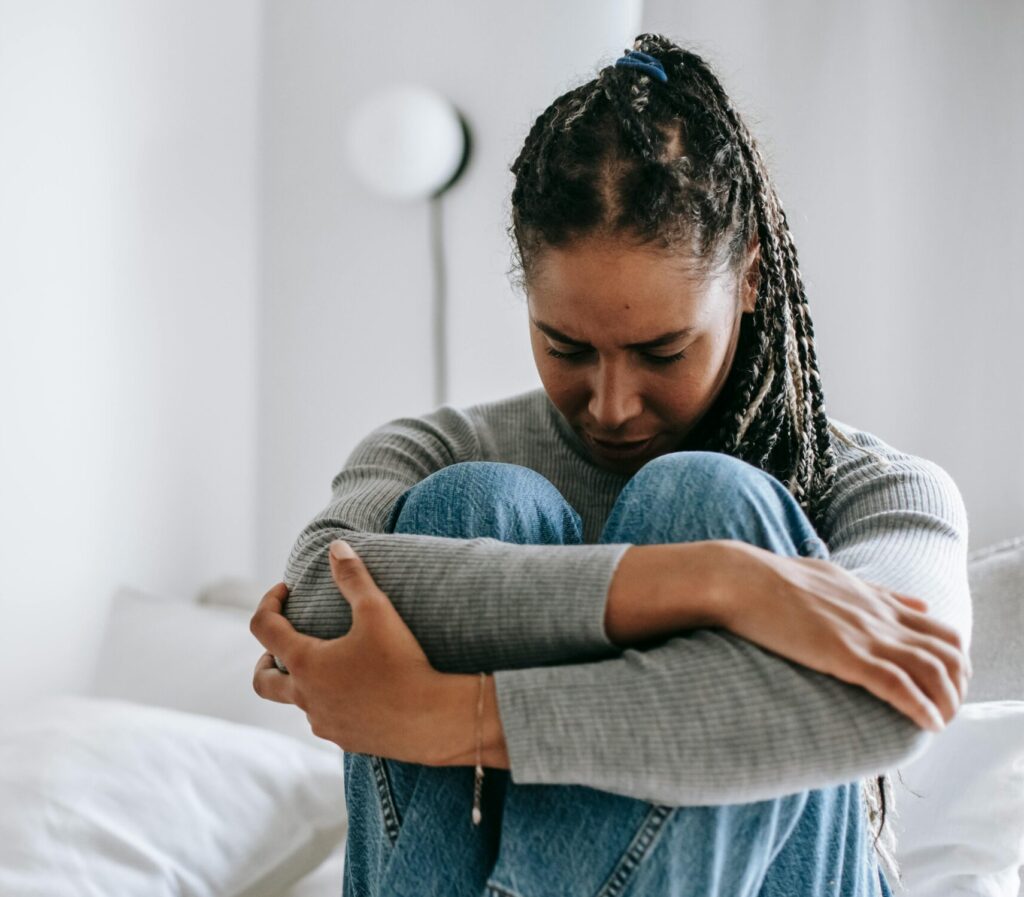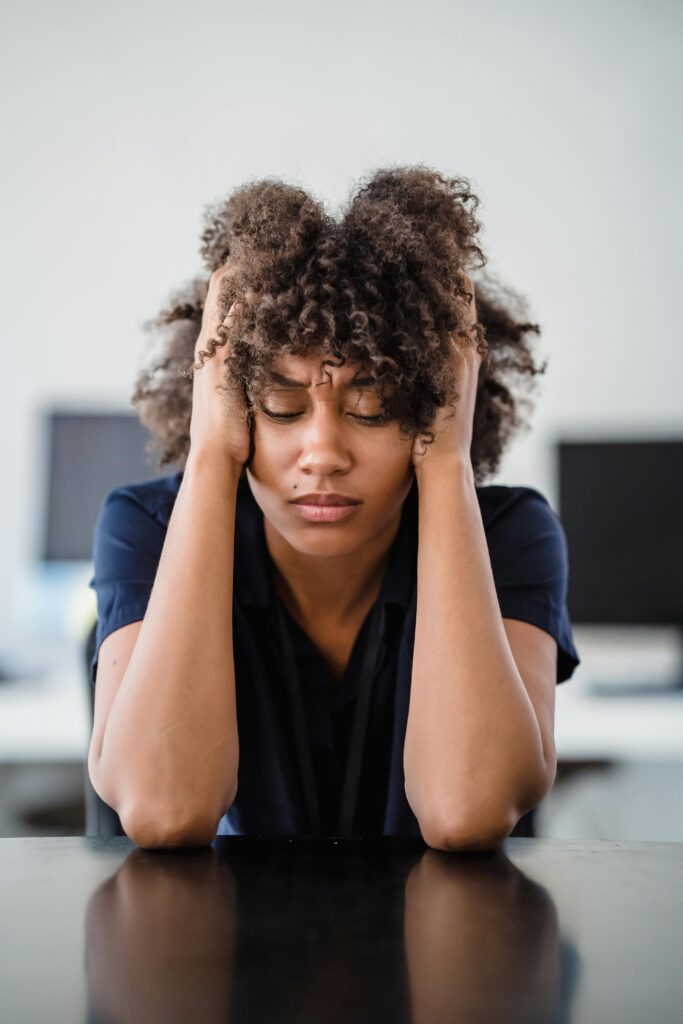Disclaimer: Not everyone who goes through menopause identifies as a woman and not all people who identify as women go through menopause. At Jayla, our core audience is people who identify as women, so we primarily use the word “women.” However, we’re working on specific content for people going through menopause who might not identify women. Inclusivity is a key value of ours, so bear with us!
Understanding the Stages of Menopause: A Comprehensive Guide
“Are you hot? You must be menopausal.”
We’ve all heard this quip, and it’s most likely informed our view of menopause (along with the entire world’s).
But what actually is menopause? How does it differ from perimenopause? Is it just about getting hot? What else happens? We’re exploring the stages of menopause and what happens in each of them.
We’ll start with some disclaimers:
- Menopause is not a disease.
- Menopause does not mark the end of a woman’s life.
- Menopause does not have to be a process we struggle through.
- Menopause should not be shameful or taboo: it’s a natural process that 100% of women go through.
*Sigh* Now that that’s out of the way, let’s talk about the stages of menopause.
The Stages of Menopause Explained
You’ve probably heard the words “perimenopause”, “postmenopausal”, and “menopause” thrown around, without quite understanding the differences between each term. You’re not the only one.
What is menopause?
Menopause is actually a moment in time. It’s the moment when you’ve gone 12 consecutive months without a period. The average age at which someone reaches menopause is 51 years old (1).
Sounds pretty simple, right? If only!
Perimenopause and postmenopause are often lumped into menopause. While they are all stages of the menopausal process, each has its own characteristics. Even within those stages, there can be variations in symptoms too.
What is perimenopause?
Perimenopause marks the beginning of our transition to menopause, often accompanied by physical and emotional symptoms (symptoms you may have previously classified as menopause symptoms). Hormones begin to fluctuate as our bodies prepare to stop menstruating. By extension, this also means our bodies are preparing to stop reproducing. Over the course of perimenopause, our ovaries shrink and estrogen levels drop (1).
In the USA, 85% of women report experiencing symptoms (2). However, it is very important to note that everybody is unique, and so is their menopausal experience. Just like some women experience pain-free menstrual cycles, while others suffer enormously, perimenopause symptoms vary widely. Some women will experience severe symptoms. Others won’t even notice their transition to menopause. They’ll continue to have regular periods during perimenopause and may breeze through it with no symptoms.
When does perimenopause start?
Just as symptoms differ, so does the beginning of perimenopause.
Perimenopause typically begins eight to 10 years before menopause and can start anywhere from your mid-30s to mid-50s, but most often begins in our early to mid-40s(3). The age at which you start perimenopause can be linked to genetics and can vary by ethnicity.
Early menopause can also occur:
1 in 100 women goes into menopause before they are 40 (4)
1 in 1,000 women goes into menopause before they are 30
How do I know if I’ve started perimenopause?
No one test can magically tell you whether you’ve started perimenopause. However, a few indicators put together can point you in that direction.
The biggest tell-tale sign that you’re entering perimenopause is changes in your periods. They could be lighter or heavier, shorter or longer, less or more frequent, or change between all of these at different points in time.
Other symptoms could also occur, and recording these can be very helpful in determining whether you’ve started perimenopause.
Jayla’s Menopause Kit, which includes a telehealth consultation with a menopause clinician, can help you figure out whether you’ve entered perimenopause.
What are the stages of perimenopause?
Although there are fluctuations in perimenopausal symptoms, there is usually a progression within perimenopause.
Early perimenopause
Early perimenopause is the onset of perimenopause, which usually involves changes in your menstrual cycle and menstruation patterns (due to hormone fluctuations). You may also start having some perimenopausal symptoms.
If you’ve had a regular menstrual cycle your entire life, this can come as quite a shock. It’s not just that your periods are lighter or heavier, longer or shorter. You’ll also likely feel the change in hormone fluctuations.
Hormonal contraception, such as the IUD or birth control pill, can sometimes help regulate these changes. But, as always with contraception, remember to check with a physician first!
Late perimenopause
This is when your period becomes more infrequent, and eventually stops completely, and typically a year later you reach menopause. Around six months before menopause, estrogen levels decrease significantly (5). This decrease in estrogen brings on common symptoms like vaginal dryness and hot flashes. These symptoms can last from six months to over five years after menopause begins.
What are perimenopause symptoms?
So, what are these perimenopausal symptoms we’ve been speaking about?
The most common symptoms include:
- Mood changes, such as irritability, depression, or anxiety (6)
- Vaginal dryness or discomfort during intercourse (7)
- Urinary incontinence or frequent urination (6)
- Hot flashes (8)
- Insomnia or sleep disturbances (9)
- Night sweats (9)
- Elevated heart rate (6)
- Weight gain and changes in metabolism
- Joint pain (10)
- Memory problems (11)
However, there are more than 36 symptoms in total. When we said it differs from person to person, we really meant it!
Additionally, perimenopause can influence your entire body, because we have estrogen receptors all over (12). That’s why you may not realize symptoms are related: one could be impacting your teeth, and the other your bladder control!
Can you still get pregnant during menopause and perimenopause?
Yes, you absolutely can get pregnant during perimenopause (13). On top of this, given the irregularity of menstrual cycles, your fertile window will be less predictable.
So, unless you’re looking to get pregnant, keep using contraception until you’re certain that you’ve reached and/or passed menopause.
How long does perimenopause last?
You may have guessed our answer already: it depends. Since it’s hard to pinpoint the exact start of perimenopause, estimates vary widely. However, perimenopause lasts anywhere from four to 10 years (14).
Is perimenopause painful?
The taboo nature of menopause and perimenopause means that many women simply “suck it up” and deal with symptoms without seeking help.
That doesn’t have to be the case: perimenopause doesn’t have to be hard.
Certainly, it can be a tricky transitional phase. Our bodies and selves change, which always requires some re-adapting. But that doesn’t mean that we have to suffer through it alone, or just “wait it out.”
What is postmenopause?
As mentioned, a year after our final period, we go through menopause. Menopause is technically only one day long! Following that, we enter postmenopause.
What does postmenopausal mean?
If somebody is postmenopausal, it means that they have passed the moment of going 12 consecutive months without a period.
What age is postmenopausal?
Given that the average age of menopause is 51 years old, women are usually postmenopausal at around 51. However, this varies from woman to woman.
Research shows that women today will spend a third of their life in postmenopause. All the more reason to make it fantastic!
What happens in postmenopause?
We’ll start with the good news: you no longer have to worry about your tampon stock or getting pregnant unintentionally (yay!).
Certain perimenopause symptoms, such as hot flashes and night sweats, may improve. However, other symptoms, like vaginal dryness and hair loss, could persist (15). Ultimately, it’s specific to your body.
One thing postmenopausal women have in common is the decline in estrogen. Due to this decline, we experience a greater risk of health issues. For example, we’re more vulnerable to heart disease and osteoporosis (which makes bones weaker and at higher risk of fractures). Regular check-ups and preventive screenings such as pelvic exams, pap smears, and breast exams are essential. Along with healthy lifestyle choices, these help maintain optimal health postmenopause.
Menopause doesn’t have to be bad
That was a lot of information, and if we’re completely honest, a lot of not-so-positive information. It’s important to remember that menopause is a normal, natural transition women go through. It’s also important to remember that it’s not our “expiry date” (no matter what the patriarchy may have us believe!).
Moreover, you don’t have to suffer in silence. We live in a time where more and more health solutions are being created and tailored for menopause (lucky us!). Maybe your grandma suffered through perimenopause and postmenopause, but we don’t have to. And it doesn’t make us weaker!
Jayla is dedicated to helping women on their menopausal journey. We provide at-home hormone test kits, telehealth consultations, and personalized treatment plans. Because we believe your best is yet to come.
References
- The menopause years (2018) ACOG. Available at: Source (Accessed: 13 June 2024).
- Grant, M.D. (no date) Menopausal Symptoms: Comparative Effectiveness of Therapies, Menopausal Symptoms: Comparative Effectiveness of Therapies [Internet]. Available at: Source (Accessed: 13 June 2024).
- (No date) What is menopause? | National Institute on Aging. Available at: Source (Accessed: 13 June 2024).
- (2014) The North American Menopause Society recommendations … Available at: Source (Accessed: 13 June 2024).
- Estrogen levels take a big drop
- Dealing with the symptoms of menopause (2017) Harvard Health. Available at: Source (Accessed: 13 June 2024).
- Changes in the vagina and Vulva (no date) Changes in the Vagina and Vulva, Sexual Side Effects of Menopause | The North American Menopause Society, NAMS. Available at: Source (Accessed: 13 June 2024).
- Nancy E. Avis, P. (2015) Duration of menopausal vasomotor symptoms, JAMA Internal Medicine. Available at: Source (Accessed: 13 June 2024).
- Menopause (2023) Mayo Clinic. Available at: Source (Accessed: 13 June 2024).
- Magliano, M. (2010) Menopausal arthralgia: Fact or fiction, Maturitas. Available at: Source (Accessed: 13 June 2024).
- Conde, D.M. et al. (2021b) Menopause and Cognitive Impairment: A narrative review of current knowledge, World journal of psychiatry. Available at: Source (Accessed: 13 June 2024).
- KM;, E. (no date) The estrogen receptors: An overview from different perspectives, Methods in molecular biology (Clifton, N.J.). Available at: Source (Accessed: 18 June 2024).
- Contraception: You need it longer than you may think (no date) Contraception: You Need It Longer Than You May Think, Sexual Side Effects of Menopause | The North American Menopause Society, NAMS. Available at: Source (Accessed: 13 June 2024).
- Perimenopause: Rocky road to Menopause (2022) Harvard Health. Available at: Source (Accessed: 13 June 2024).
- (2021) Postmenopause: Signs, symptoms & what to expect, Cleveland Clinic. Available at: Source (Accessed: 13 June 2024).



